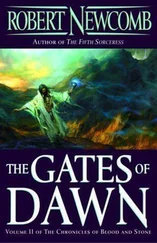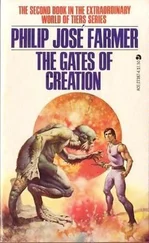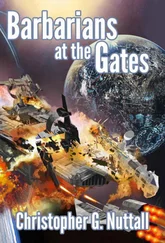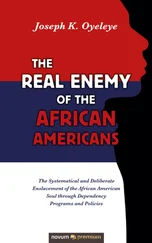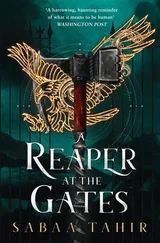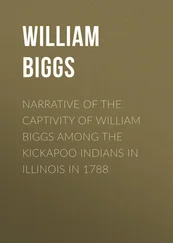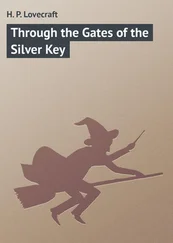After dinner, OKW’s decision to transfer the Stukas back to the upper Don suddenly became clear. Another Russian attack had routed two Italian divisions from their positions fifty miles west of Serafimovich. No one yet realized that this was the opening of Stalin’s second great attack, aimed at seizing the port city of Rostov and trapping the entire German army in Southern Russia. Reports so far were sketchy, but Manstein added what fragmentary information he possessed to his pessimistic appraisal of the future. He was well aware of the disaster the news implied. If the Italian Army failed to hold, his German divisions would have to go to their rescue. The result: Sixth Army at Stalingrad would be lost. Overwhelmed by a sense of onrushing catastrophe, the field marshal fixed his attention on the men in the Kessel, whose time for deliverance was at hand.
For days, Manstein had bombarded Hitler and Gen. Kurt Zeitzler about the need to issue a Führer Order for Operation Donnerschlag (“Thunderclap”). The order would call for the complete evacuation of the Kessel. It would also mean the mass movement of the Sixth Army across the steppe, during which time, the Germans would have to fight the Russians on every flank.
No matter how bloody the outcome of this retreat might be, at this stage of the battle, Manstein considered Operation Thunderclap the only practical solution. The airlift had obviously failed: Hoth’s rescue force could only channel a few days’ worth of supplies into the pocket.
To date, however, Hitler had agreed only to Operation Winter Storm, the physical linkup by Hoth’s forces to resupply the Sixth Army. The Führer still forbade Paulus to withdraw from the Kessel. For Hitler, retreat from Stalingrad was out of the question, and his reasoning was typically arrogant, “Too much blood had been spilled there by Germans!”
When General Zeitzler agreed with Manstein on the need for Thunderclap, and promised to get approval from Hitler within a matter of hours, Manstein regarded Hitler’s agreement as a foregone conclusion. Thus, on December 17, he briefed his intelligence chief, Major Eismann, on the situation and ordered him to fly into the Kessel to discuss strategy with the Sixth Army chiefs.
The next afternoon Paulus made an inspection tour of the front. It left him extremely depressed, for he saw multiplying evidence of his troops’ physical decline. The men moved slowly and were indifferent to commands. Their faces had become pinched. With eyes sunken behind protruding cheekbones, many just stared into space.
Returning to Gumrak, he found Major Eismann and greeted him cordially, as did Arthur Schmidt, who had campaigned with Eismann in France in 1940. Eismann quickly made it clear that Hoth’s relief column could only continue its drive for a very limited period. He referred specifically to apparent bad news from the Italian front, and warned that Hoth’s divisions might have to be shifted away from the drive to the Kessel in order to save that puppet army. Eismann also went on to say that even under optimum conditions, it was doubtful whether Hoth’s tanks could advance more than twenty miles beyond the Mishkova River, to Businovka, where Paulus had hoped to make the linkup. He asked Paulus to extend his own drive another twenty-five kilometers south.
Paulus and Schmidt reaffirmed their intention to break out as soon as possible. But they argued that Operation Winter Storm, the linkup, was not feasible until Sixth Army received enough fuel for its tanks. There was only enough gas for a sortie of twenty kilometers, not nearly enough to reach the 6th Panzer Division at the Mishkova. Under these conditions, it was impossible to extend the drive. Both generals strongly urged that Thunderclap, the plan calling for the withdrawal of the entire Sixth Army from the Volga, had to be initiated at the same moment as Winter Storm. Then, the full weight of Sixth Army’s waning power could be focused at one point. It was the sole hope for the breakout’s success.
Eismann pressed them about accepting the risks of making the linkup, even on unfavorable terms. But Paulus and Schmidt steadfastly refused to begin Operation Winter Storm without more supplies. Schmidt was particularly stubborn on this point. He called the airlift the chief stumbling block to success. Half in jest, he told Eismann, “The army would hold its positions until Easter if it were supplied better.”
With the situation still unresolved, the meeting adjourned. The discouraged Paulus went to his quarters, where he wrote a letter to his wife, Coca. Never one to burden her with his own troubles, he asked the usual questions about her welfare and that of his children, then closed optimistically: “Just now we are having a very hard time indeed. But we’ll survive. And after the winter, there is another May to follow….”
For several weeks, German signal officers inside the Kessel had been trying to establish a reliable form of voice contact with Manstein, 150 miles to the southwest. Denied regular phone service by Russian cable cutters, they had created a minor technological miracle.
At the perimeter of the pocket they raised a 120-foot high antenna beacon that linked Gumrak with Novocherkassk by means of a radiotelephone combined with an ultra shortwave decimeter set that could not be mbnitored by the enemy. Constantly shelled and repaired, the beacon transmitted messages to relay stations installed in German-occupied territory. But one by one the relays fell to Russian tank columns. The radiotelephone link failed, and only a teleprinter remained to record the words produced by the decimeter machine. As the time arrived for Manstein and Paulus to make a final agonizing appraisal of their options, the chattering keys of the teleprinter became their only contact.
If the two men had been able to hear each other’s voices, certain intonations or inflections might have helped resolve the crisis. But as the situation stood, Major Eismann reported to Manstein that he did not believe Paulus would break out under prevailing conditions, and Manstein could sympathize with Paulus’s reasoning. However, Manstein was beginning to wonder whether or not General Schmidt was exerting undue influence on Paulus’s decision not to try a breakout without a proper quantity of fuel. To the field marshal, positive action was necessary within hours. Haggling over gasoline supplies was a luxury Sixth Army could not afford, especially since Manstein was being pressured to do something, anything, to save his own left wing.{The Eismann mission caused controversy among the German leaders. Field Marshal Manstein said that Eismann’s report of the conference convinced him that Paulus and Schmidt did not intend to break out under existing conditions. Arthur Schmidt has dismissed this conclusion by pointing out that he and Paulus merely outlined the tremendous problems they faced without adequate air supply. Further, Schmidt believes that Manstein used the remarks of the “lowly” major to justify his own subsequent actions. Friedrich von Paulus never referred publicly to the Eismann visit, thereby creating the impression that he did not attach any particular importance to it. No stenographic record of the conference exists.}
Unable to communicate the emotions of the moment, Paulus stood beside the teleprinter machine in the operation bunker at Gumrak shortly after midnight on December 19, and waited for its impersonal clickety-clack keyboard to begin moving. The machine hummed and leapt into life:
+++ Here Chief of Staff Army Group Don [General Schulz]….
+++ General Paulus answering….
+++ The field marshal [Manstein] requests your opinion regarding the following question:
Читать дальше

